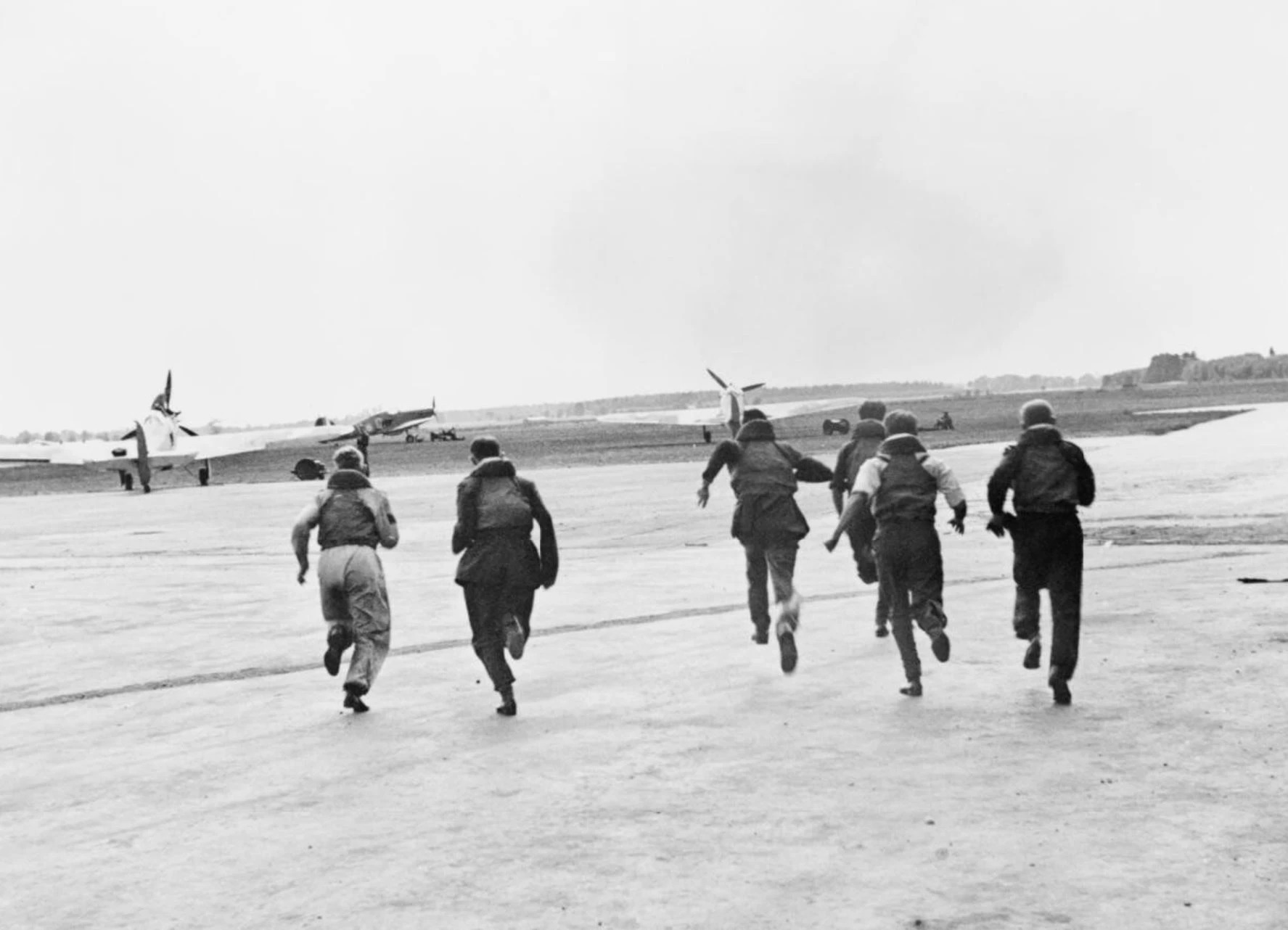Scrambling (military) on:
[Wikipedia]
[Google]
[Amazon]
 In
In
Air Ministry "Scramble" Bell
F-4E Phantom Air Defense Scramble
Aerial warfare Battle of Britain
 In
In military aviation
Military aviation is the design, development and use of military aircraft and other flying machines for the purposes of conducting or enabling aerial warfare, including national airlift (air cargo) capacity to provide military logistics, logist ...
, scrambling is the act of quickly mobilising military aircraft. Scrambling can be in reaction to an immediate threat, usually to intercept hostile aircraft.
Battle of Britain
The term was used during theBattle of Britain
The Battle of Britain () was a military campaign of the Second World War, in which the Royal Air Force (RAF) and the Fleet Air Arm (FAA) of the Royal Navy defended the United Kingdom (UK) against large-scale attacks by Nazi Germany's air force ...
, when Royal Air Force
The Royal Air Force (RAF) is the Air force, air and space force of the United Kingdom, British Overseas Territories and Crown Dependencies. It was formed towards the end of the World War I, First World War on 1 April 1918, on the merger of t ...
pilots and their fighters were readied and available to fly. Detection and monitoring of enemy aircraft, e.g. by the Chain Home radar stations, would feed into the RAF Fighter Command's Dowding system for control and management of the defenses. Once a decision had been made to intercept the enemy formation a telephone call would be made to the chosen fighter squadron's airfield, and those air crews available would be scrambled. The scramble order was communicated to alert pilots waiting by their aircraft by the loud ringing of a bell.
Every minute lost before takeoff would be advantageous to the enemy, as it could allow a pilot to gain extra height above the advancing plane formations.
Information passed to the scrambling fighters included location and height: "Angels" with a number was used to describe height of aircraft, such as " Angels One Five" for aircraft approaching at , and a rough estimate of numbers. Unidentified aircraft were known as '' bogeys'', and known enemy ones were called '' bandits''.
Cold War
During theCold War
The Cold War was a period of global Geopolitics, geopolitical rivalry between the United States (US) and the Soviet Union (USSR) and their respective allies, the capitalist Western Bloc and communist Eastern Bloc, which lasted from 1947 unt ...
, many NATO
The North Atlantic Treaty Organization (NATO ; , OTAN), also called the North Atlantic Alliance, is an intergovernmental organization, intergovernmental Transnationalism, transnational military alliance of 32 Member states of NATO, member s ...
air forces had crews stationed in Europe on alert and scrambled whenever their airspace was penetrated. The rudimentary bell-ringing communication was eventually replaced by electronic radio communication methods. However, many fighter squadrons into the current era would keep a bell at their squadron bar in legacy to the Battle of Britain roots. A common tradition was that anyone at the bar who rang the bell would be required to buy a round of drinks for all present.
Both interceptors and nuclear bomber
A bomber is a military combat aircraft that utilizes
air-to-ground weaponry to drop bombs, launch aerial torpedo, torpedoes, or deploy air-launched cruise missiles.
There are two major classifications of bomber: strategic and tactical. Strateg ...
forces were kept on " Quick Reaction Alert" (QRA). Crews were kept close to or in their aircraft positioned on Operational Readiness Platforms (ORP)'s at the runway, which were expected to be able to take off within a short period, such as 15 minutes, in less-than-normal situations.Force V: The history of Britain's airborne deterrent, by Andrew Brookes. Jane's Publishing Co Ltd; First Edition 1 Jan. 1982, , p.133. It could be only two minutes at times of heightened tension between the opposing powers.
See also
*Index of aviation articles
Aviation is the design, development, production, operation, and use of aircraft, especially heavier-than-air aircraft. Articles related to aviation include:
A
Aviation accidents and incidents
– Above Mean Sea Level (AMSL)
– ADF
– Acces ...
* List of established military terms
* Combat readiness
* Minimum Interval Takeoff
* Interceptor aircraft
*Ground-controlled interception
Ground-controlled interception (GCI) is an air defence tactic whereby one or more radar stations or other observational stations are linked to a command communications centre which guides interceptor aircraft to an airborne target. This tactic wa ...
* Glossary of RAF code names
* Operational Readiness Platform
* Point defense
References
{{ReflistExternal links
Air Ministry "Scramble" Bell
F-4E Phantom Air Defense Scramble
Aerial warfare Battle of Britain